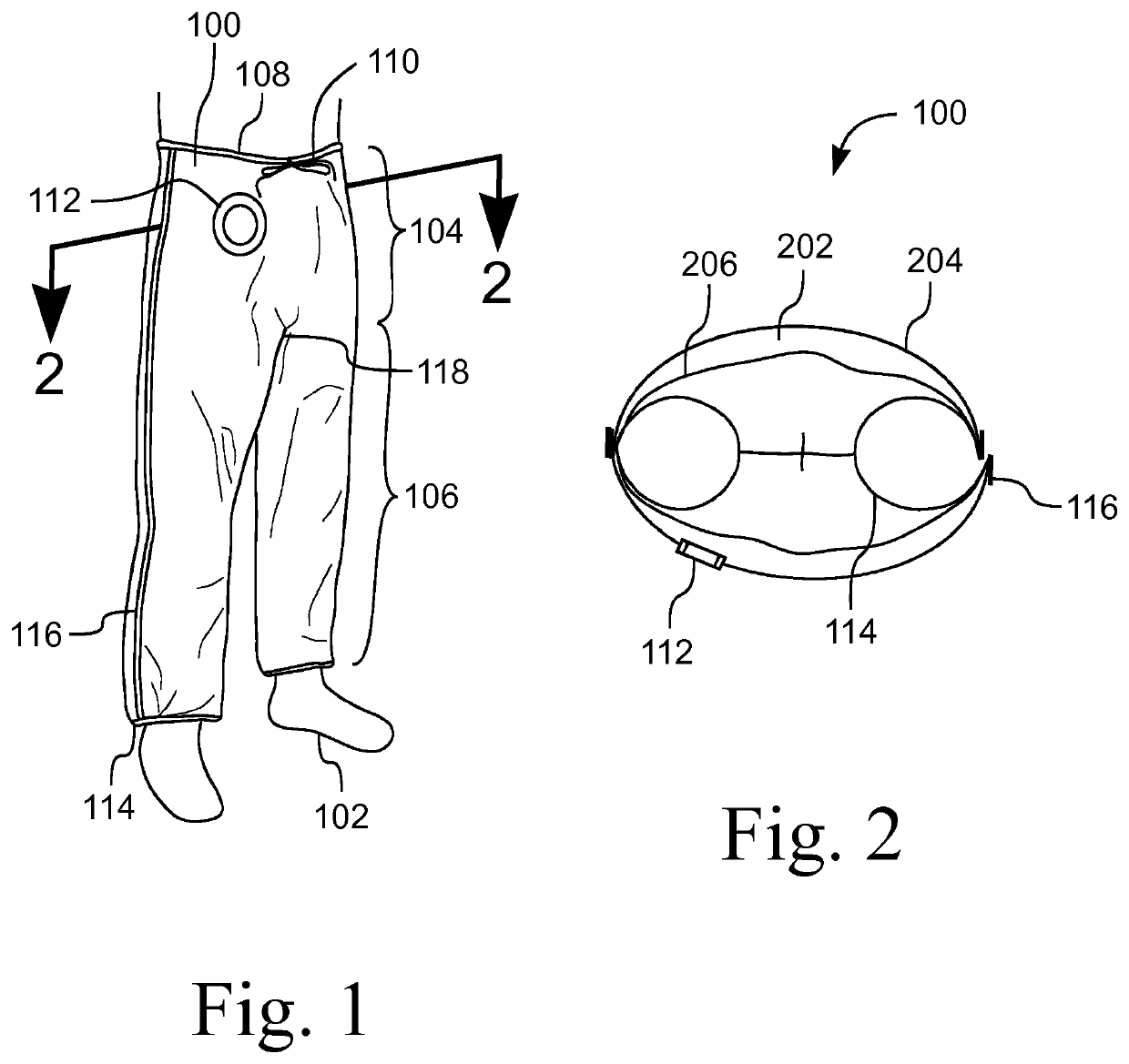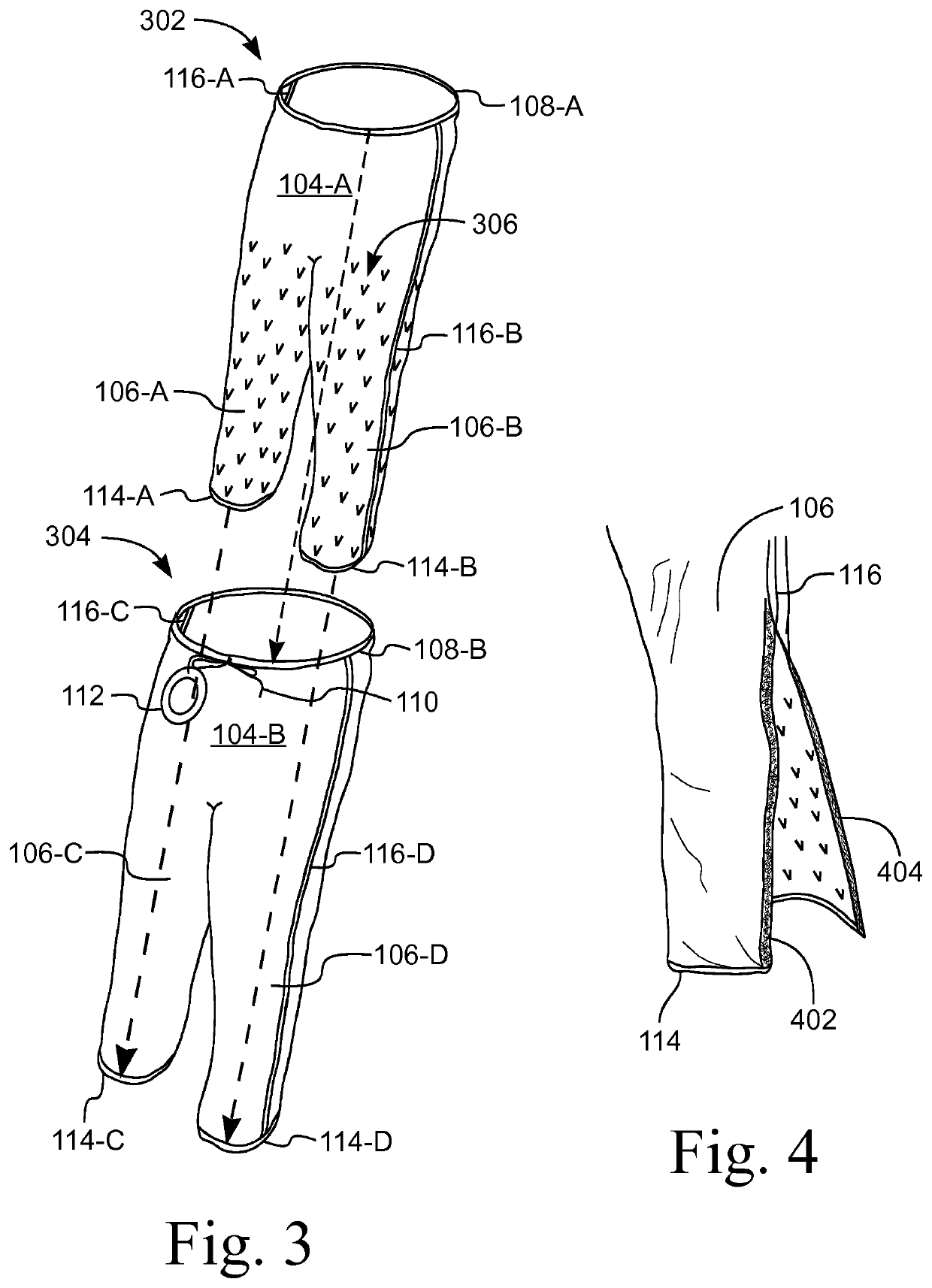Garment for preventing redistribution hypothermia
a technology of hypothermia and garments, applied in the field of garments for preventing redistribution hypothermia, can solve the problems of increasing the core temperature, reducing comfort, sweating, etc., and achieving the effect of constant core temperature and effective heating of legs and/or arms
- Summary
- Abstract
- Description
- Claims
- Application Information
AI Technical Summary
Benefits of technology
Problems solved by technology
Method used
Image
Examples
Embodiment Construction
[0030]A garment 100 for warming a patient and preventing redistribution hypothermia is disclosed. The garment 100 provides passive warming and active warming of patients before, during and / or after surgery or other medical procedures.
[0031]FIG. 1 illustrates a perspective view of one embodiment of a garment 100 worn by a patient 102 who is standing. FIG. 1 shows the garment 100 in a first, or passive, configuration that is suitable for a patient 102 who is mobile. The first configuration allows the patient 102 to stand, walk, sit, or otherwise move or position himself. In the illustrated embodiment, the garment 100 is pants.
[0032]The garment 100 includes a waist portion 104, two leg portions 106, and two releasable openings 116. The waist portion 104 encloses a portion of the patient's abdomen. The waist portion 104 includes a waist hem 108, a fastener 110, and a port 112. The waist hem 108 defines an opening in the waist region of the garment 100. The fastener 110 secures the waist...
PUM
 Login to View More
Login to View More Abstract
Description
Claims
Application Information
 Login to View More
Login to View More - R&D
- Intellectual Property
- Life Sciences
- Materials
- Tech Scout
- Unparalleled Data Quality
- Higher Quality Content
- 60% Fewer Hallucinations
Browse by: Latest US Patents, China's latest patents, Technical Efficacy Thesaurus, Application Domain, Technology Topic, Popular Technical Reports.
© 2025 PatSnap. All rights reserved.Legal|Privacy policy|Modern Slavery Act Transparency Statement|Sitemap|About US| Contact US: help@patsnap.com



